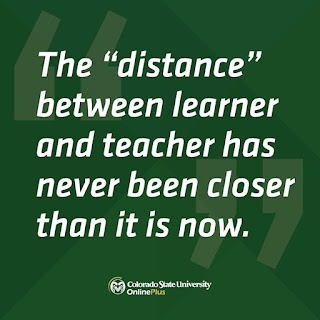The Future of Digital Teaching and Learning
March 13, 2020, changed the methods in which educators educate their students. From Kindergarten to the collegiate level, everyone had to adapt and quickly shift to a form of digital teaching and learning. New buzzwords in the education field quickly grew such as remote, asynchronous, synchronous, Zoom, Google Meets, hybrid, etc. Flash forward to August and September of 2020. Educators were masked up and back in the classroom teaching their students with some in front of them and then some virtually joining from the safety of their home. I never thought that I would join this club of educators facing the never been faced before experience. As a first-year teacher, I was blown away at all of the "best practices" I had learned from my undergraduate education and pre-service experiences in schools being thrown right out of the window. It was amazing to see the difficulties and struggles that my colleagues and I experienced. How would we ensure all students received an equitable education? How could we prepare for a student that needed to quarantine and learn from home? How am I going to teach students in person and at home while still learning how to teach the curriculum? What do you mean I only have thirty minutes to teach elementary students how to read? It was also amazing to see the triumphs and small victories we made. The most fulfilling moment that I had during this year was when we met as a grade-level team and reflected on the year using data from our workbooks. As a first-year teacher, I started the school year with four students reading significantly below grade level. By the end of the year, not only were they reading on grade level, they made such significant growth that they were on the brink of reading above grade level. How is that possible when your students could see half of your head because they were sitting behind a tall desk shield? What was the technique or teaching strategy that worked? Digital teaching and learning worked for me. Students had the ability to go back and rewatch that video of how to add or subtract multistep story problems. The screencastify showed students exactly how to upload their work on Google Classroom without the help of an adult. The digital math workplaces allowed students to play math games at home while their classmates played them in person. Raz-Kids, Epic, and Online Reading Rooms made through Google Slides helped students with learning disabilities access the same reading skills without the pressure of their disability. They felt like could do the same as their peers without feeling like they are behind or left out. While many educators felt overwhelmed or pressured this year, it helped us to realize what our students can do with digital teaching and learning opportunities. They had opportunities to express themselves without the pressure of what they were not able to do. I am not sure where the 2021-2022 school year will take me or my students, but I know with the assistance of digital technologies, the kids will be just fine.



Comments
Post a Comment